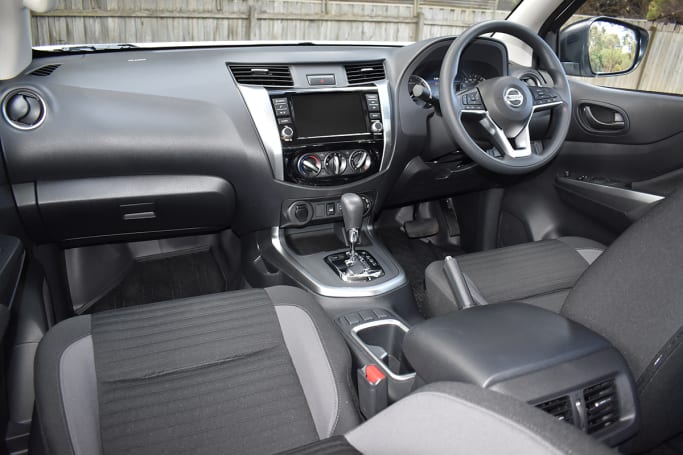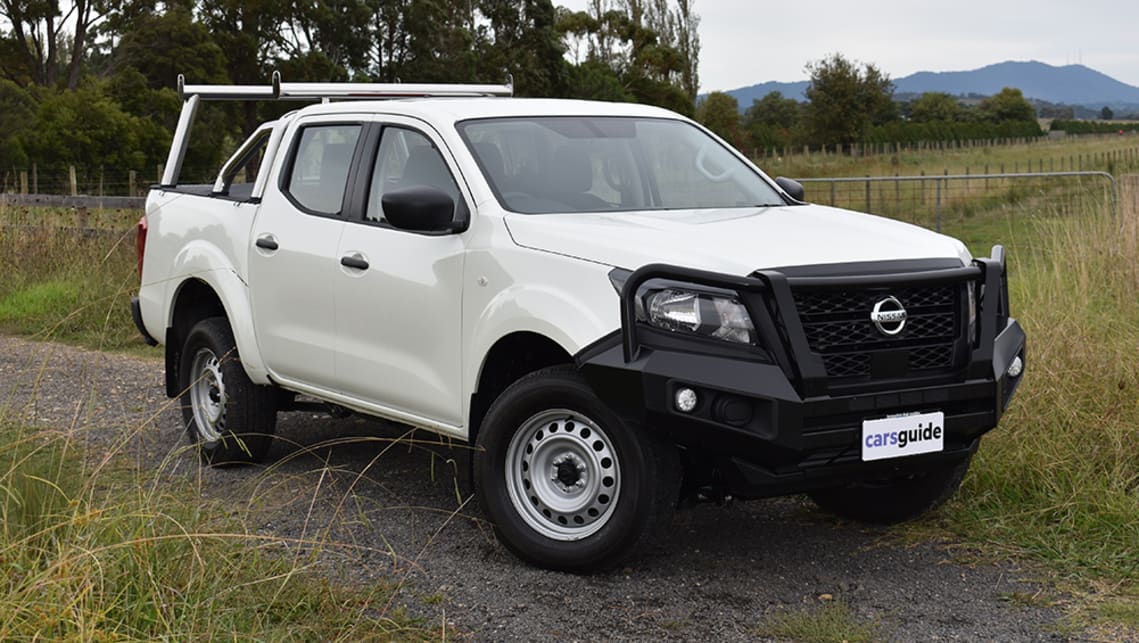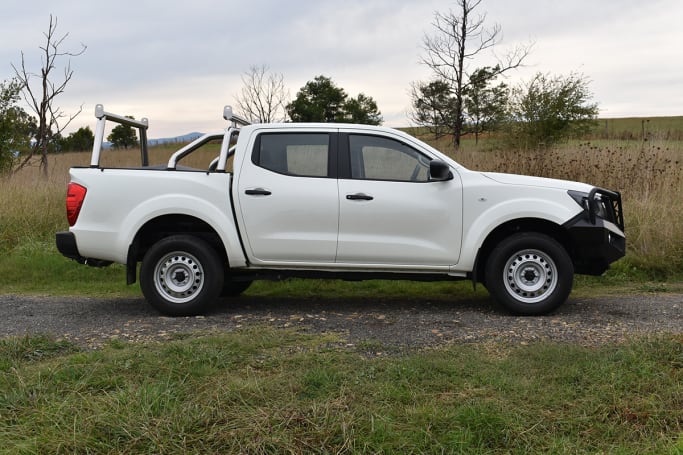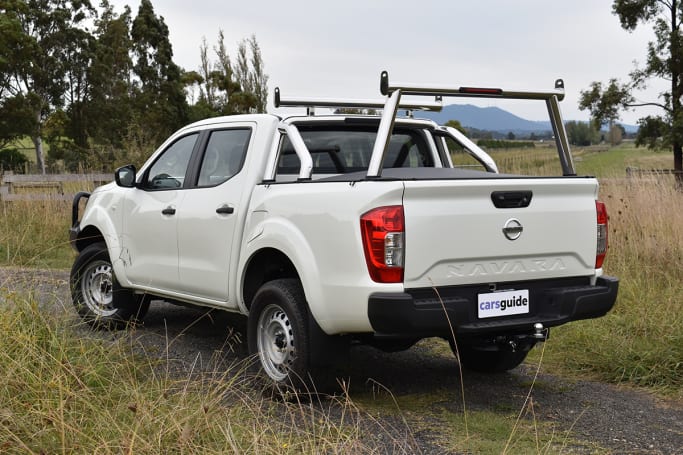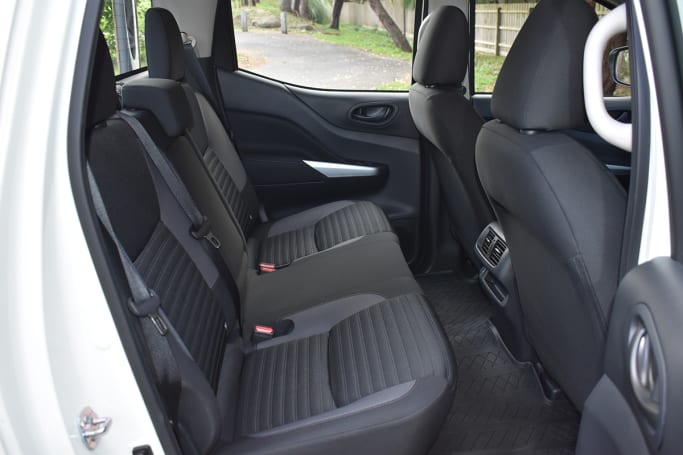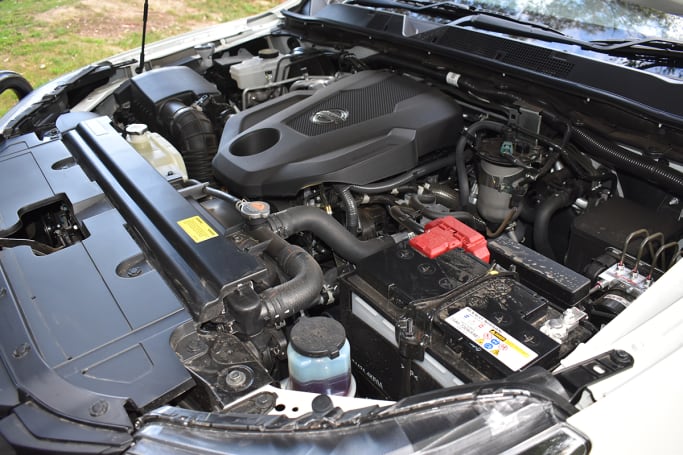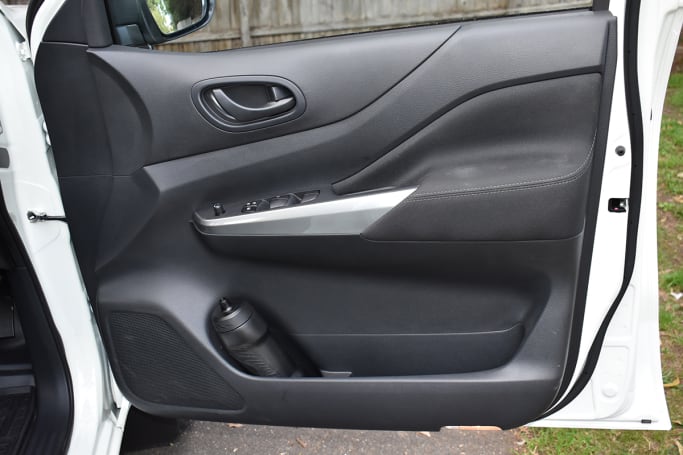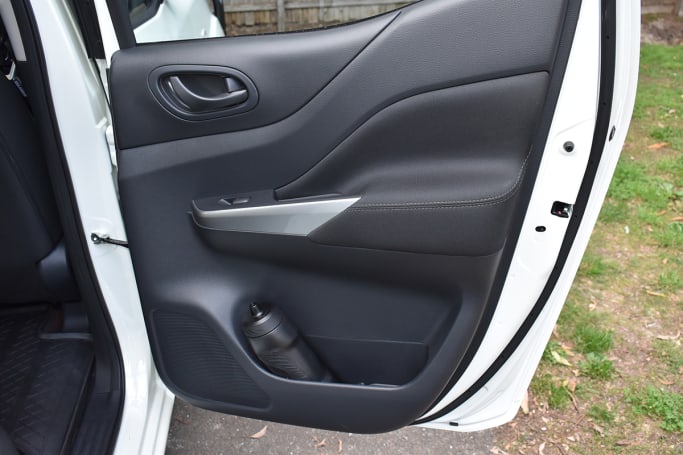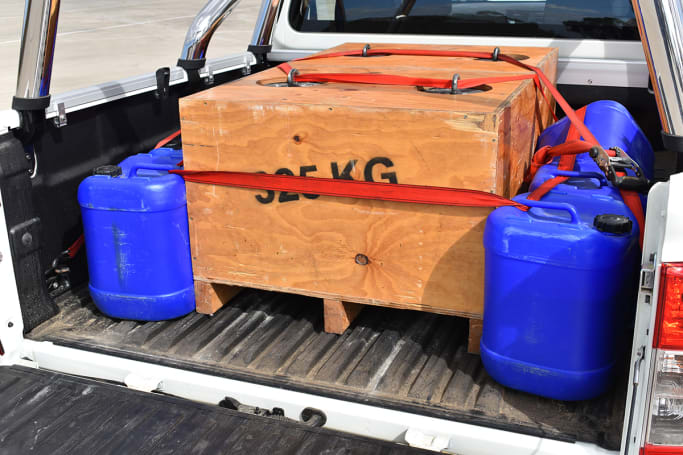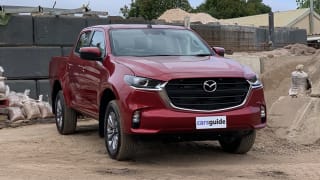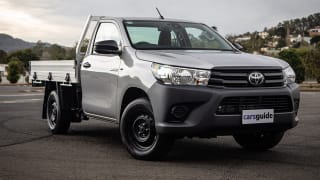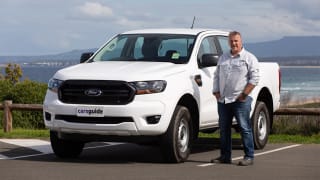Our test vehicle is the 4x4 dual-cab ute in base-grade SL specification. Standard issue is the torquey 2.3-litre twin-turbocharged four-cylinder diesel and six-speed manual transmission for a tempting $47,990 driveaway, or $49,490 with the seven-speed torque converter automatic as fitted to our example (less for ABN holders).
It's also fitted with a selection of items from Nissan’s genuine accessories range including hooped steel bull-bar, ST sports bar, front/rear ladder racks, towing kit, tub-liner, soft tonneau cover and all-weather floor mats, which combined add more than RRP$8000 to the price.
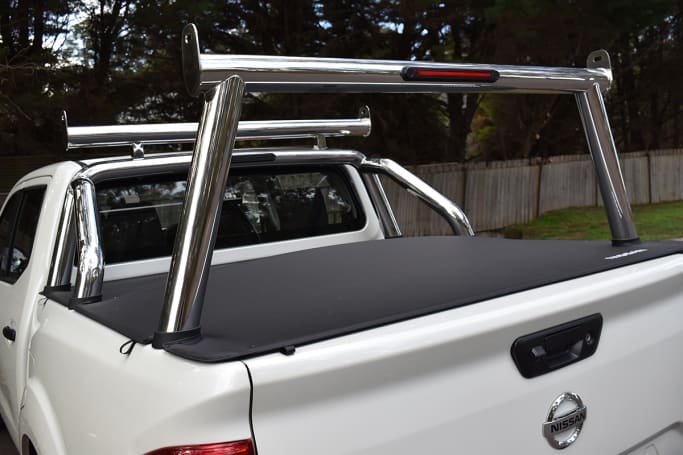
Larger 17-inch diameter steel wheels (up from the previous 15-inch) with big 255/65 R17 tyres and a full-size spare portray the SL’s work focus, but there’s also plenty of useful standard kit for a hard-working truck like automatic headlights with halogen daytime running lights, tailgate assist, rear bumper step, reversing camera and rear diff lock.
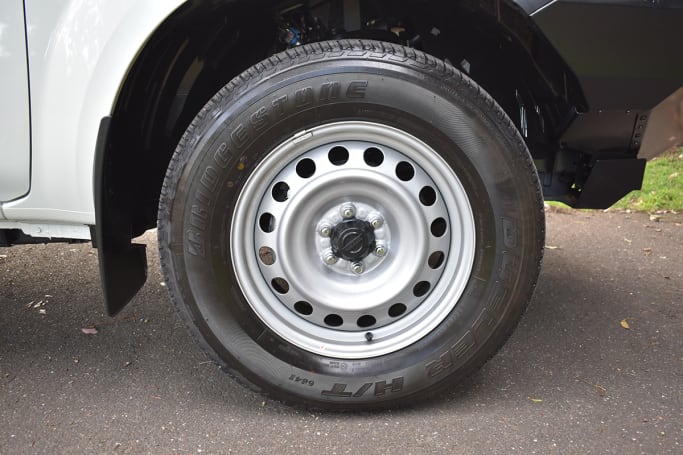
The vinyl-floored cabin offers four USB ports, two 12-volt accessory outlets, 7.0-inch instrument cluster display with digital speedo and an infotainment system featuring an 8.0-inch touchscreen with multiple connectivity including Apple CarPlay/Android Auto and more.
